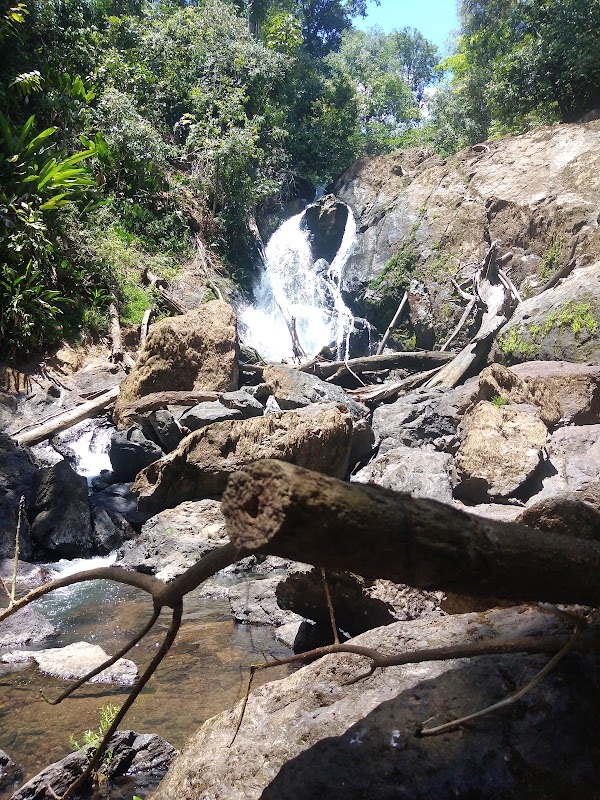Chasing Cascades and Wildlife Wonders in Costa Rica’s Piedras Blancas National Park
Piedras Blancas National Park offers an exhilarating escape beyond the Osa Peninsula, featuring striking waterfalls and vibrant wildlife trails. From moderate hikes to immersive wildlife encounters, this wilderness invites practical adventurers to experience Costa Rica’s raw beauty with confidence and care.
Start Early to Catch Wildlife and Cooler Temps
Begin your hike by 7 a.m. to enjoy the best animal activity and avoid afternoon heat and storms common in tropical climates.
Wear Grippy Waterproof Footwear
Trails mix slippery roots, mud, and rocks—footwear with solid tread and water resistance will keep you steady and comfortable.
Carry At Least 2 Liters of Water
Hydration is critical; the humid environment drains energy quickly, especially on longer wildlife trails where rest stops are scarce.
Consider Local Shuttle Services
Access roads can be rough for standard vehicles—using a shuttle from Puerto Jiménez helps avoid vehicle damage and stress before your hike.
Chasing Cascades and Wildlife Wonders in Costa Rica’s Piedras Blancas National Park
Piedras Blancas National Park stretches just beyond the familiar edges of the Osa Peninsula, revealing a slice of Costa Rica where waterfalls command attention and wildlife trails refuse to be ignored. This reserve is firmly rooted in raw nature, inviting hikers of varying stamina to engage with its fierce landscapes—forested paths that don’t simply wind but pulse with life.
Start your adventure on the Cascada Escondida trail, a 4.5-kilometer out-and-back hike with a moderate 300-meter elevation gain. The trail's surface shifts from soft earth to rocky steps, winding through dense rainforests where the trees act like sentries, their broad leaves dripping with the morning mist. The river alongside dares you forward, its currents pushing with urgent whispers toward the waterfall. As you arrive, the waterfall greets you with steady power, water carving its descent in crunchy sheets that tap sharply on the rocks below. It’s a natural force neither to be rushed nor tamed.
For those chasing wildlife encounters, the Sendero Guardabarranco is an essential path. Spanning 6 kilometers with gentle inclines, it cuts through thick undergrowth and giant fig trees, their roots grasping the earth like ancient hands. Monkeys chatter above, as toucans flash brilliant colors from the canopy, and elusive jaguar tracks mark the softer ground in rare moments of solitude. Early morning is best to catch these creatures in action before the humidity thickens.
Planning your hike means balancing thrill with preparation. Footwear with solid grips is non-negotiable; slick roots and muddy patches demand steady footing. Carry at least 2 liters of water per person; the tropical heat doesn’t just climb—it lingers. Start your hike early, ideally before 8 a.m., to avoid midday storms and confront the jungle when its pulse beats fastest.
Directions to the park are straightforward from Puerto Jiménez, the closest town, which offers convenient lodging and guides. The park’s roads may challenge your vehicle on the last stretch, so a four-wheel drive or arranging a local shuttle is wise.
Besides the sights, Piedras Blancas compels respect for its fiercely wild nature. The environment here isn’t a backdrop; it’s a living entity with a fragile balance. Trails are marked but they feel like invitations to a dialogue—not a race.
Whether your aim is waterfall photography, birdwatching, or simply stretching your legs in a setting untamed, Piedras Blancas demands and rewards a focused approach. Breath steady, boots ready—the jungle has a story to tell, and your footsteps are part of it.
Nearby Trips
All Adventures
Boat Charters
Water Activities
Adventures near Puerto Jiménez
Discover the unique and memorable adventures that make Puerto Jiménez special.
Frequently Asked Questions
Are guided hikes recommended in Piedras Blancas National Park?
Yes, guides enhance safety and wildlife spotting, and they provide valuable ecological information that deepens your experience on the trails.
What wildlife am I most likely to see on these trails?
Common sightings include white-faced capuchin monkeys, toucans, scarlet macaws, and occasional tracks of tapir or jaguar, particularly in less traveled sections.
Is the park accessible year-round?
Yes, but the dry season from December to April offers easier trail conditions and more wildlife visibility. The rainy season can limit access due to slippery paths and flooding.
Are the waterfalls safe for swimming?
While some pools are accessible, currents can be strong and rocks slippery. Swimming is best done with caution and local advice, especially during rainy months.
What local accommodations are recommended?
Puerto Jiménez has several eco-lodges and guesthouses providing comfortable stays close to the park entrance and offer guided trips.
Are there any cultural sites inside or near the park?
The area is rich with indigenous history and conservation efforts that reflect a blend of local stewardship and natural heritage, though cultural sites inside are minimal and best explored through local guides.
Recommended Gear
Hiking boots with ankle support
Protects feet and provides grip on rocky, slippery forest floors and muddy sections.
Water-resistant rain jacket
Essential during wet season to stay dry during sudden downpours.
Reusable water bottle or hydration pack
Keeps you hydrated for the duration of the hike in the humid tropical climate.
Insect repellent
Protects against mosquitoes and other biting insects prevalent especially in wetter months.
Local Insights
Hidden Gems
- "Mirador Piedra Blanca lookout offers panoramic views of the Golfo Dulce rarely visited by tourists."
- "Small natural pools off the Cascada Escondida trail provide quiet resting spots often overlooked."
Wildlife
- "Keep an eye out for the rare emerald toucanet, whose green feathers blend perfectly with the canopy."
- "At dawn and dusk, listen for the guardabarranco bird whose call often echoes through the forest trails."
History
"Piedras Blancas served as critical habitat preservation linked to the Osa Peninsula’s early conservation movement in the 70s, helping to maintain one of the most biodiverse rainforests on the planet."

